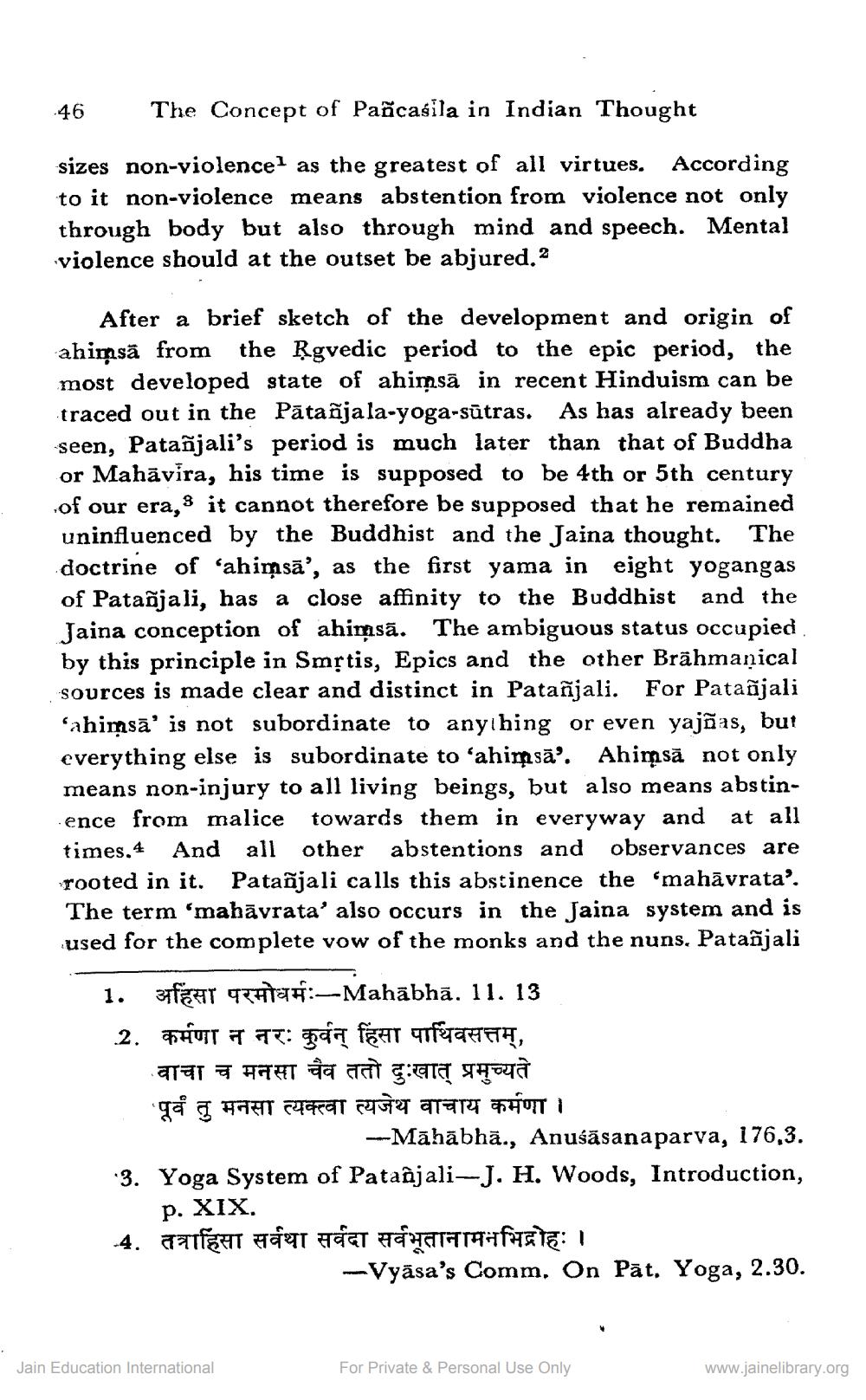________________
The Concept of Pancasila in Indian Thought
sizes non-violence1 as the greatest of all virtues. According to it non-violence means abstention from violence not only through body but also through mind and speech. Mental violence should at the outset be abjured.2
.46
After a brief sketch of the development and origin of ahimsa from the Ṛgvedic period to the epic period, the most developed state of ahimsa in recent Hinduism can be traced out in the Patanjala-yoga-sūtras. As has already been seen, Patanjali's period is much later than that of Buddha or Mahavira, his time is supposed to be 4th or 5th century of our era, it cannot therefore be supposed that he remained uninfluenced by the Buddhist and the Jaina thought. The doctrine of 'ahimsa', as the first yama in eight yogangas of Patanjali, has a close affinity to the Buddhist and the Jaina conception of ahimsa. The ambiguous status occupied by this principle in Smṛtis, Epics and the other Brahmaṇical sources is made clear and distinct in Patanjali. For Patanjali 'ahimsa' is not subordinate to anything or even yajñas, but everything else is subordinate to ‘ahimsa'. Ahimsa not only means non-injury to all living beings, but also means abstinence from malice towards them in everyway and at all times.4 And all other abstentions and observances are rooted in it. Patanjali calls this abstinence the 'mahāvrata". The term 'mahāvrata' also occurs in the Jaina system and is used for the complete vow of the monks and the nuns. Patanjali
1.
afgar :-Mahābhā. 11. 13 2. कर्मणा न नरः कुर्वन् हिंसा पार्थिवसत्तम्, वाचा च मनसा चैव ततो दुःखात् प्रमुच्यते
पूर्वं तु मनसा त्यक्त्वा त्यजेथ वाचाय कर्मणा ।
-Māhābhā., Anusāsanaparva, 176,3.
3. Yoga System of Patanjali-J. H. Woods, Introduction, p. XIX.
4 तत्राहिंसा सर्वथा सर्वदा सर्वभूतानामनभिद्रोह: ।
Jain Education International
-Vyasa's Comm. On Pat. Yoga, 2.30.
For Private & Personal Use Only
www.jainelibrary.org




